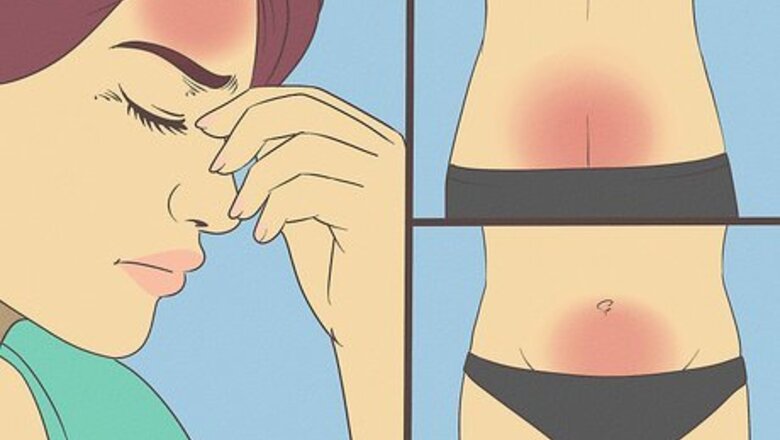
views
X
Trustworthy Source
US Office on Women's Health
U.S. government agency providing resources for women's health
Go to source
If you have ovaries and a uterus, you will most likely get your period every 21 to 35 days, unless you are pregnant or have underlying health conditions that affect your cycle. While you may experience some degree of discomfort, experts note that there are ways to relieve your pain and treat the symptoms of your period as they happen.[2]
X
Trustworthy Source
US Office on Women's Health
U.S. government agency providing resources for women's health
Go to source
Using Medication to Treat Cramps
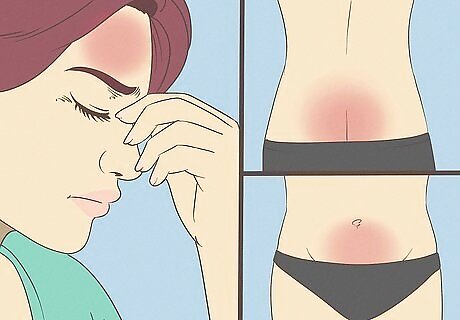
Recognize menstrual cramp symptoms. Menstrual cramps, or dysmenorrhea, are throbbing pains in your lower abdomen. They result from the uterus' strong contractions. Many people have cramps before and during their periods. Menstrual pain symptoms include: Intense, throbbing pain in your lower abdomen Dull, constant ache in your abdomen Pain that radiates to your lower back and thighs Nausea Loose stools Headache Dizziness
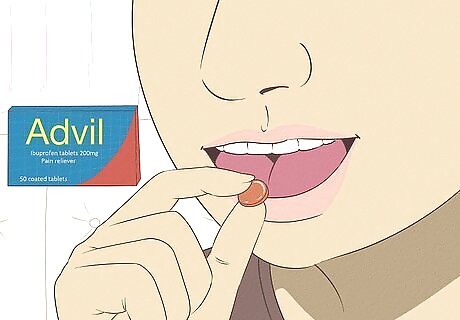
Take pain relievers. Begin taking the pain reliever at the beginning of your period or when you feel menstrual cramp symptoms. Continue taking the medication as indicated on the packaging (or by your doctor) for 2 to 3 days. You also may stop taking medication if your cramps subside. There are many options available for pain relievers: Over-the-counter pain relievers like ibuprofen (Advil, Motrin IB, etc.) or naproxen sodium (Aleve) can help relieve your cramps. The menstrual pain reliever Midol contains the pain reliever acetaminophen plus the stimulant caffeine and antihistamine pyrilamine maleate. Midol works to decrease menstrual pains, headaches, and bloating.
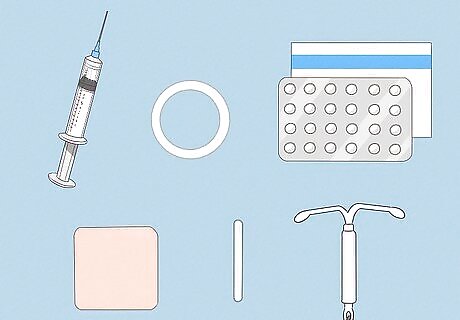
Use birth control. If your cramps do not subside with pain killers, talk to your doctor about hormonal birth control pills. These pills contain hormones that prevent ovulation and reduce the severity of menstrual cramps. You can also receive hormones in other forms including via injection, an arm implant, a skin patch, a vaginal ring, or an intrauterine device (IUD). All these methods can reduce your cramps. Talk to your doctor about which is right for you.
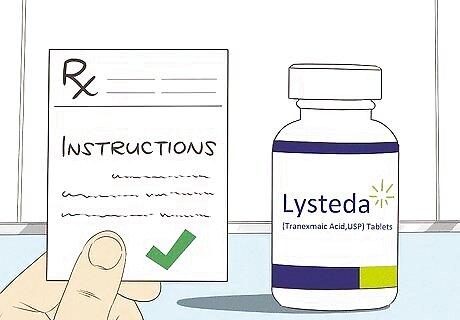
Talk to your doctor about stronger options. If over-the-counter pain relievers don't work for you, you can talk to your doctor about prescription-strength nonsteroidal anti-inflammatory drugs (NSAIDs). If your menstrual pain is extreme, talk to your doctor about tranexamic acid (Lysteda). This prescription drug is taken to reduce heavy bleeding and severe cramps. You only need to take it during your menstrual cycle.
Treating Cramps Naturally
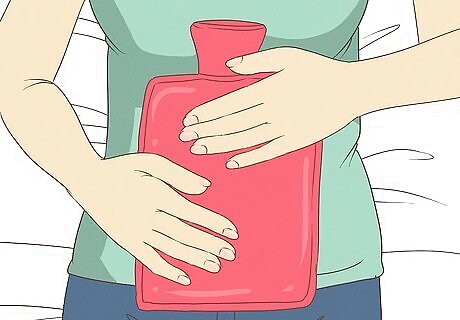
Use heat. Heat can be just as effective at beating your cramps as pain medication. Heat helps relax your contracting muscles. You can apply heat to your abdomen directly or submerge your body in a bath. The key is to bring heat to your abdomen and torso. Consider the following methods: Soak in a hot bath. Put two to four cups of Epsom salt in your bath. This can help decrease pain. Place a heating pad on your abdomen. Use a hot water bottle. Be sure to put a covering on the bottle before placing it directly on your skin. Purchase a heat patch for your abdomen. Some companies like ThermaCare sell special heat patches that stick to your abdomen. You can wear these products at school or work under your clothing for up to eight hours of comfort. Fill a clean sock with rice or beans. You can also add a few drops of an essential oil, such as lavender or peppermint. Sew or tie the open end shut. Microwave the sock for 30 seconds at a time and use as a compress.
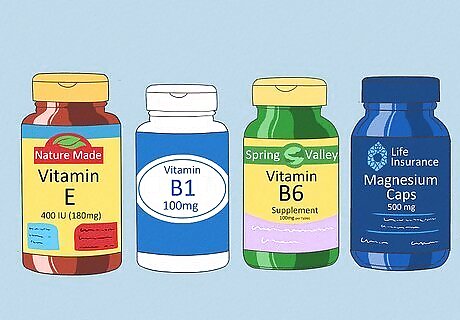
Get your vitamins. Vitamin E, vitamin B-1 (thiamine), vitamin B-6, and magnesium can reduce menstrual cramps greatly. Check to see what the vitamin contents are in the foods you buy. Read the labels. If you are not getting enough of these vitamins, buy healthier foods like salmon. Also, consider taking a daily supplement. Speak with your doctor before taking any new dietary supplements. Vitamin E: The recommended daily allowance (RDA) for adult women is 15mg (22.4 IU) daily. Vitamin B-1: The RDA for adult women is 1mg (14-18 years) or 1.1mg (19+ years) daily. Vitamin B-6: The RDA for adult women is 1.2mg (14-18 years) or 1.3 mg (19-50 years) daily. Magnesium: The RDA for adult women is 360mg (14-18 years), 310mg (19-30 years), or 320mg (31-50 years) daily.

Consume omega-3 fatty acids. You can get these heart-healthy fatty acids via supplement, or eat foods high in them. Fish, leafy green vegetables, nuts, flaxseeds, and vegetable oils such as canola oil are good sources of omega-3 fatty acids.
Making Yourself Comfortable
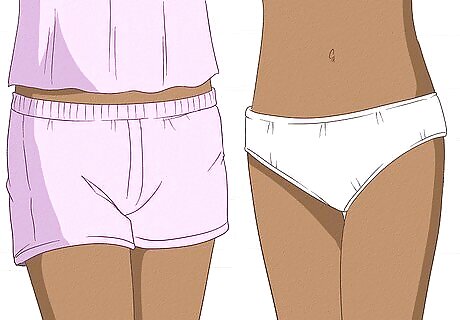
Wear loose-fitting clothing. The key to being comfortable during your period is to keep your stomach area free from constriction. Wear pants, dresses, or skirts that are not too tight. Avoid control-top pantyhose that will compress your abdomen. Flowing maxi dresses, for example, can be ideal.

Be prepared. Be sure to have plentiful pads, tampons, or any other needed menstrual hygiene items with you when on the go. Especially in the early years of your period, it is wise to have a backup pair of underwear with you. Bring a few pain relievers with you too. You will be more comfortable if you know you can handle an emergency. If you are having a heavy period, visit the bathroom more often to check for leaks or whether you need to change your products. Some people find reusable products to be more comfortable. Wearing period underwear when you expect your period, or when your period is lighter can also feel more comfortable. If you use a tampon or menstrual cup, you can double this with period underwear for extra security.

Gather your favorite healthy snacks. If you are feeling unwell, it is okay to reward yourself with healthy favorite snacks. Choose food in its natural state like a fresh banana instead of a banana pudding. Avoid excessively fatty foods like French fries. These foods can make your period worse. Soy milk can help reduce menstrual pain. Eat calcium-rich foods like beans, almonds, spinach, and kale. Eat foods high in antioxidants, including blueberries, cherries, tomatoes, squash, and bell pepper.
Being Healthy and Active
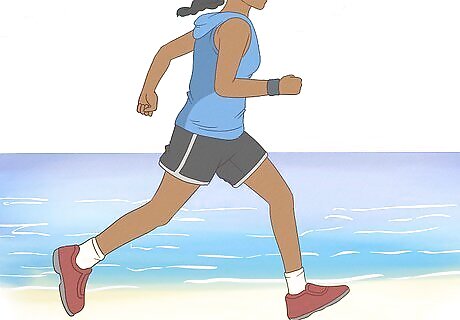
Exercise. Studies show that physical activity can ease menstrual cramp pain. Taking a brisk walk, light jog, or swim can help your cramps. There is no need to work out too hard during your period. Doing some exercise, though, can make you feel fitter and happier.
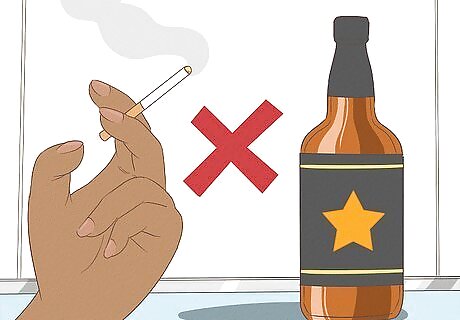
Avoid alcohol and tobacco. These substances can worsen menstrual cramps. Alcohol can leave you feeling dehydrated. In any case, do not use alcohol in conjunction with painkillers.
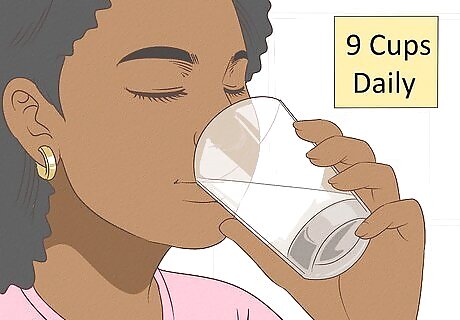
Stay hydrated. Drink at least 9 cups (2.2 liters) of filtered water daily. Your body is losing fluid and blood during menstruation. By staying hydrated, your body will feel less weak and you will be more energetic. Beverages with electrolytes, like sports drinks or coconut water, also can help you feel better. Coconut water has more potassium than a banana and is a great natural source of hydration.
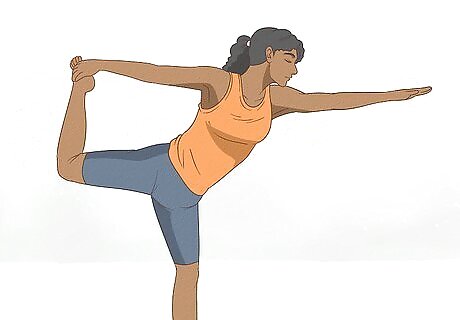
Reduce stress. Psychological stress can increase the severity of your cramps. Consider doing yoga exercises to calm your body. Stretching also can help alleviate your cramps.
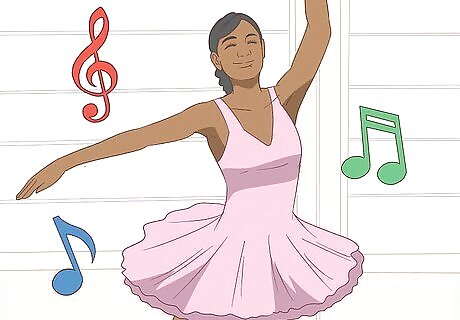
Realize your period is normal. About half the population will menstruate during their lifetime. It is a completely healthy, natural process. Do not be ashamed of your period. You can live life normally during menstruation. If you feel uncomfortable about having your period, talk to a trusted friend or adult.











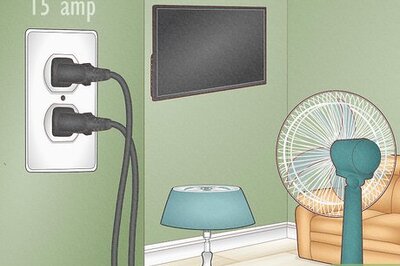




Comments
0 comment